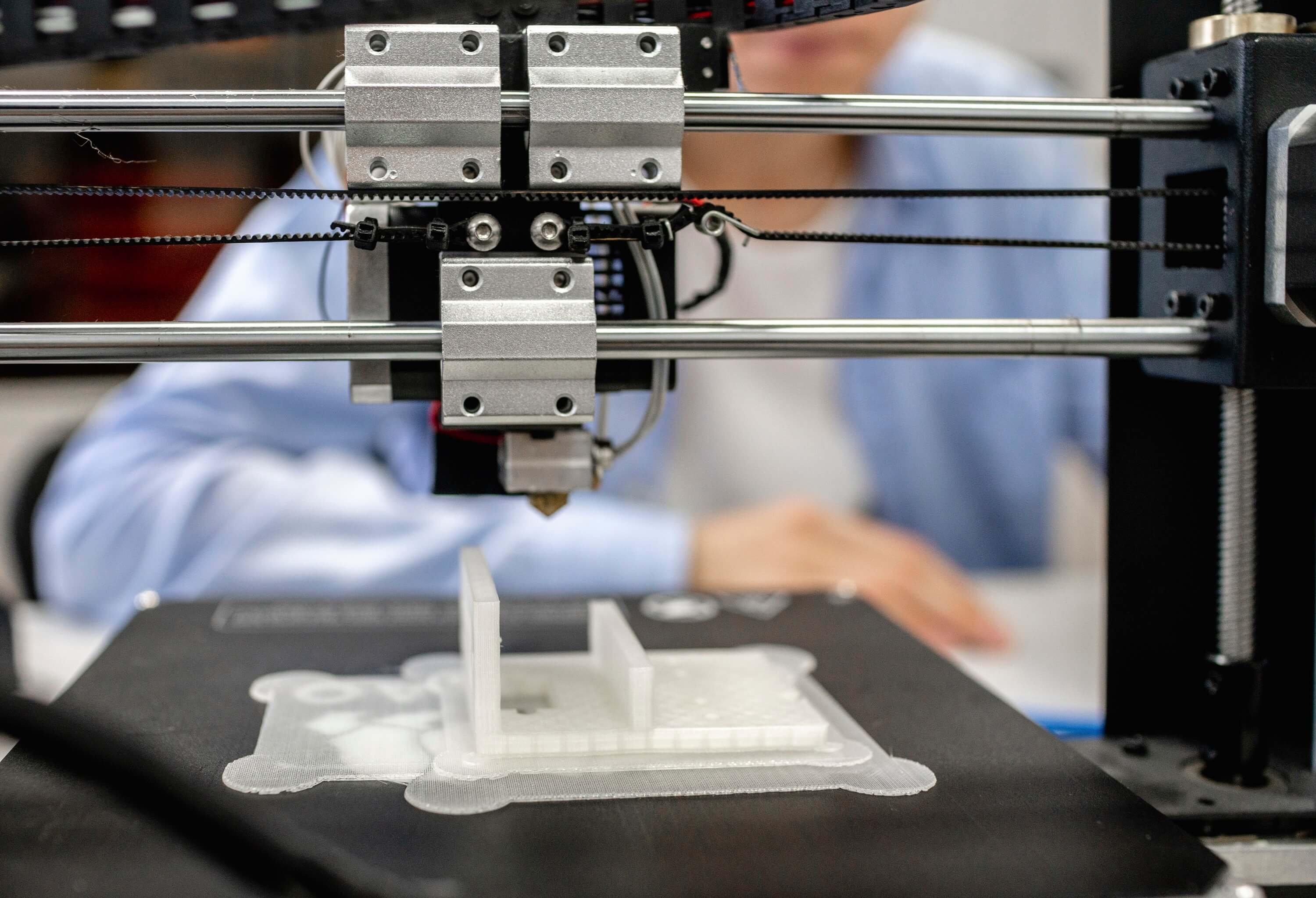
The article predicts a rise in 3D printing's role in manufacturing, driven by technological advancements and new materials, solidifying its importance in prototyping and production across industries.
How 3D Printing Technology Transforms & Benefits the Manufacturing Industry
The rapid evolution of 3D printing technology has ushered in a new era of accessibility. No longer confined to niche applications, 3D printing, or additive manufacturing (AM), has found its way into diverse industries, from aerospace and defense to healthcare and consumer goods.
The technology's versatility spans the creation of everyday household items to intricate components, marking it as a transformative force that is here to stay.
In this article, we explain the profound influence of 3D printing on the manufacturing sector, and the numerous advantages it brings to the table.
From increased precision to accelerated production and design freedom, 3D printing is reshaping how products are conceptualized, prototyped, and manufactured.
How Fast is 3D Printing?
The speed of 3D printing is a primary advantage, outpacing traditional processes. Rapid verification and development of design ideas, coupled with the ability to produce functional end parts at low to mid volumes, present significant time-saving benefits.
Processes like selective laser sintering (SLS) can print entire builds with hundreds of parts in approximately 16 hours, including heating and cooldown periods.
3D Printing in Malaysia: A Growing Trend in Additive Manufacturing
In Malaysia, more and more businesses are starting to use 3D printing to improve manufacturing. This move in Malaysia is part of a worldwide trend where companies are using new technology like 3D printing services to keep up with changes in the manufacturing sector.
Advantages of 3D Printing for the Manufacturing Industry
Additive manufacturing, or 3D printing, is rewriting the rules of mass production. By constructing products layer by layer from a 3D model, this technology enables the fabrication of complex designs that traditional methods struggle to replicate.
This new technology offers several advantages, such as the following:
1. Reduced Cost of Manufacturing
One of the most compelling advantages of 3D printing is its potential to drastically reduce costs. Many 3D-printed parts can be produced at a fraction of the cost of traditional methods, making it an economically viable option.
2. Increased Speed
A standout advantage of 3D printing is the swift production of parts. While traditional methods may take weeks or months, 3D printing can fabricate components in a matter of hours, significantly reducing lead times for production projects.
3. Increased Accuracy and Precision
When it comes to industrial manufacturing, 3D printing offers unparalleled accuracy and precision. Parts with intricate details and tight tolerances are crafted with a level of precision that traditional methods find challenging to match.
4. Improved Design Flexibility and Customization
3D printing empowers designers with newfound freedom. Unlike traditional methods with inherent design limitations, this technology allows for the creation of complex shapes and structures previously deemed impossible.
3D Printing Methods for the Manufacturing Sector
The following 3D printing methods are widely used in manufacturing for creating prototypes, custom parts, and sometimes final products. They offer flexibility in design, reduced material waste, and efficient production methods, enabling companies to innovate and iterate quickly within their manufacturing processes.
1. Fused Deposition Modeling (FDM)
FDM works by melting plastic filaments and precisely layering them to form an object. It's similar to a precise hot glue gun, building the object layer by layer based on a digital design.
2. Stereolithography (SLA)
SLA uses a vat of liquid resin and a UV laser to solidify layers of the resin. The laser traces the object's shape on the liquid resin, hardening it layer by layer until the entire object is formed.
3. Binder Jetting
In Binder Jetting, a liquid binding agent is deposited onto a thin layer of powdered material, bonding these particles together to create the object's shape layer by layer.
4. Selective Laser Sintering (SLS)
SLS employs a high-powered laser to fuse together small particles of materials like plastic, metal, or ceramic powders. The laser selectively fuses the powdered material according to the digital blueprint, layer by layer, creating a solid object.
Conclusion: Future of 3D Printing in Manufacturing
While the question of when to replace traditional manufacturing methods with 3D printing services lacks a universal answer, the increasing availability and affordability of 3D printing signal a transformative wave.
Shorter lead times, lower costs, and enhanced flexibility position 3D printing as a compelling option in the manufacturing sector.
All in all, the future of 3D printing in manufacturing holds immense promise. Ongoing technological advancements are enhancing accessibility, allowing businesses of all sizes to leverage 3D printing for prototyping and end-part production.
Anticipate greater integration of 3D printing in industrial manufacturing as technology evolves, potentially accompanied by the development of new materials.
